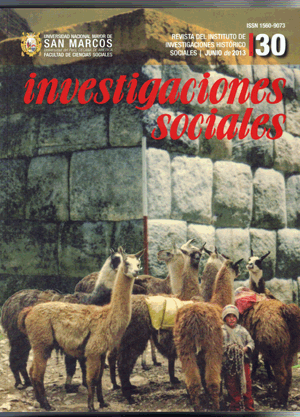Archaeological study on productive development on the Guancas and Taramas in the Central Andes: New Perspectives
DOI:
https://doi.org/10.15381/is.v17i30.7876Keywords:
Guancas, Taramas, Agriculture, Livestock, Quechua, Puna, Ecological levels.Abstract
In this paper we focus on the archaeological study of the, pre-Tawantinsuyo, Tarama and Guanca culture, analyzing its agricultural development in relation to the natural resources that offered the Central Andes and identifying their own particular cultural characteristics. For this purpose we conducted a series of archaeological surveys of the current territory of Junin, which was occupied by the Guancas and Taramas, and we also conducted archaeological excavations at the Guanca site of Anjushmarca. All the archaeological evidence we recorded during our research helped us better understand the development and production of Guancas and Taramas, which led us to undertake new theories on agriculture and livestock development in relation to the central Andes providing an approach closer to the Andean reality. Furthermore, in this article, we mentioned some criticisms and observations to the theories raised by researchers who preceded us in the study of Guancas and Taramas.Downloads
Published
Issue
Section
License
Copyright (c) 2013 Irvin Lucio Navarro Amaro

This work is licensed under a Creative Commons Attribution-NonCommercial-ShareAlike 4.0 International License.
AUTHORS RETAIN THEIR RIGHTS:
a. Authors retain their trade mark rights and patent, and also on any process or procedure described in the article.
b. Authors retain their right to share, copy, distribute, perform and publicly communicate their article (eg, to place their article in an institutional repository or publish it in a book), with an acknowledgment of its initial publication in Investigaciones Sociales.
c. Authors retain theirs right to make a subsequent publication of their work, to use the article or any part thereof (eg a compilation of his papers, lecture notes, thesis, or a book), always indicating the source of publication (the originator of the work, journal, volume, number and date).













